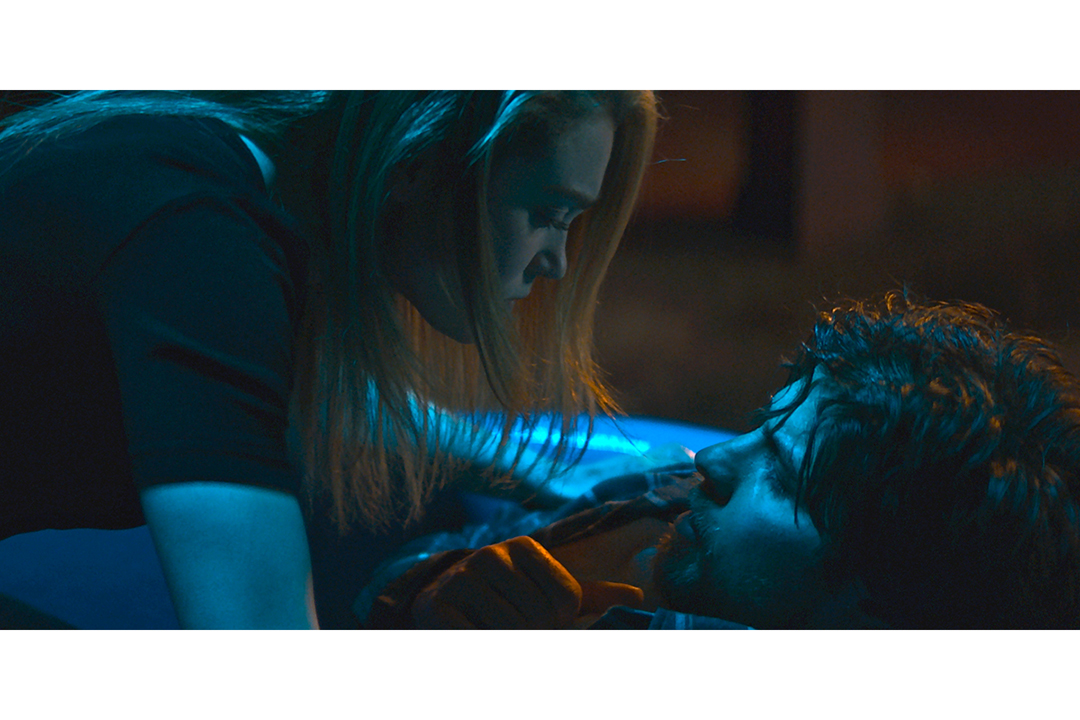Content warning: The plot of Kicking Blood contains discussions of suicide, drug use, and addiction.
When I first saw that the film Kicking Blood, directed by Blaine Thurier, was advertised as a comedy horror vampire movie, I braced myself for mindless — dare I say, trashy — entertainment. What I got instead, however, was neither funny nor scary, but a strange mosaic of scenes, colours, themes, and ideas that left me scrambling to piece everything together.
The conceptual drama explores themes such as addiction, loss, and identity — all mixed into your typical vampire movie. Gone are the castles, black cloaks, and slicked-back hair of Count Dracula and the twinkly, muscular bodies of Edward Cullen and friends; instead, these tropes are replaced with down-on-their-luck blood addicts that evoke pity and sympathy rather than fear and terror.
Just to hammer the vampires-as-junkies metaphor home, the vampires in this film aren’t presented as wealthy aristocrats who hunt innocent victims — although they do like to think of themselves as being superior to humans — but as nighttime scavengers who can’t go out into the sun and struggle to find their next prey. Their victims are themselves lost souls: an adulterer constantly seeking a new thrill, an artist desperately trying to validate themself through their sculptures, and a man who disassociates from the parts of himself that he prefers not to deal with by hiding behind cocaine and parties.
By explicitly portraying vampires as junkies who find pleasure in drinking human blood, the movie presents addiction as a living being that can be sustained only by sucking the life out of its victims. Addiction is framed not as an active choice, but as an insidious predator that hunts and slowly kills its victims.
The film’s two main characters are Robbie, a homeless alcoholic who is on the verge of committing suicide, and Anna, a vampire who is tired of immortality. The two meet in an unlikely encounter on the street. As Anna takes Robbie to her warehouse lair, she tells him that she will drink his blood and “get high as fuck.” The consumption of blood is portrayed not as a substance necessary for vampires’ fulfillment, but simply as the result of an irresistible desire for euphoria.
As Robbie resigns himself to his fate of being killed by Anna, she is taken aback, noting that people usually scream and fight back. She spars with Robbie and the two become entangled in each other’s journey of kicking their addiction.
Although Kicking Blood is categorized as horror, the movie isn’t really scary as much as it is uncomfortable. It inspires a quiet unease that is undercut by very beautiful, but jarring, transitions: bright colours and trippy shots that sharply contrast the film’s dark and gritty tone draw viewers into the story, almost breaking the fourth wall. Throughout the screening, I had to remind myself that I was watching a film, not witnessing real-life events.
Near the climax of the film, Anna is faced with a choice: giving in to her cravings and turning Robbie into a vampire, or letting go of her addiction, likely dying in the process. As I watched a lingering shot of Anna lying unconscious on the ground — during which everyone in the theatre held their breath — I saw the character marvel at the beautiful sunrise cutting through the trees and wilderness surrounding her.
I wondered for a bit whether she died or survived, but realized that it didn’t really matter. In any case, she was able to free herself, and that’s a hopeful message I can get behind.


